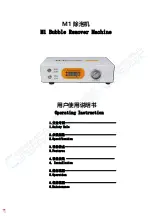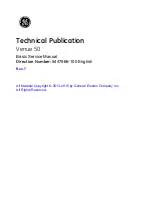
6046100064L02 1702V002SE
35
Operation
WARNING
Sterilisation success at risk
Depending on the textile load, hygro-
scopic condensation can occur, particu-
larly on cotton fabrics� This phenome-
non can lead to overheated, unsaturat-
ed steam, which can no longer have the
necessary sterilising effect�
i
Allow textile loads to acclimatise suffi-
ciently under room climate conditions�
In particular, make sure that the rela-
tive humidity is sufficient (> 40%)�
i
Do not sterilise any warm, dry wash-
ing from an ironer or drier� Allow the
items to acclimatise first�
i
Do not leave textile loads to rest for
an unnecessarily long time in the
heated steriliser before the start of
sterilisation� Start the program imme-
diately after loading�
Preparing the instruments
NOTICE
Increased need for maintenance and
functional impairment of the unit.
Any present dirt residue can be de-
tached during sterilisation under steam
pressure� Disinfectant or cleaning agent
residue can lead to corrosion�
i
Comply with the instructions of the in-
strument manufacturers regarding re-
processing and sterilisation, as well as
all relevant guidelines and standards,
e�g� DIN EN ISO 17664�
i
We recommend using suitable cleaning
agents and disinfectants for the cleaning and
disinfection of instruments, and where possi-
ble the use of cleaning and sterilisation ma-
chines� Manual cleaning and disinfection
should only be performed in exceptional
cases�
i
Clean the instruments very thoroughly�
i
After the end of manual reprocessing, rinse
the instruments with suitable water (preferably
demineralised or distilled water)�
i
If necessary thoroughly dry the instruments
with a clean, lint-free cloth�
i
Only use care products that are suitable for
steam sterilisation� Check with the manufac-
turer of the care product�
It is possible to use e�g� reusable container sys-
tems or soft packaging, such as transparent
sterile product packaging, paper bags, sterilisa-
tion paper, textiles or non-woven material�
In addition, it is also possible to use e�g� stand-
ard tray cassettes or cassettes for implants in
conjunction with sterile product packaging�
Systems made of aluminium should be used in
cases where the sterilisation containers that are
used are not sold or recommended by Dürr
Dental�
Closed standard tray cassettes must be perfo-
rated on at least one side, preferably the bot-
tom, or equipped with valves� This will ensure
that steam can penetrate and condensation can
drain off�
Where possible, textiles and instruments
should be sterilised separately from each
other in separate sterilisation containers
or sterile product packaging�
Preparation of textiles
The following must be taken into account when
reprocessing textiles and placing the textiles in
the sterilisation container:
DANGER
Sterilisation success at risk
Inadequate steam penetration into the
washing package and/or poor drying
will jeopardise the sterilisation success�
This represents a health risk for patients
and surgery personnel�
i
Follow the instructions of the textile
manufacturers for reprocessing and
sterilisation, as well as all relevant di-
rectives and standards, e�g� DIN EN
13795�
i
Align the folds of the textiles so that they are
parallel to each other�
i
Stack the textiles as vertically as possible and
not too tightly in the sterilisation containers so
that flow channels can form�
i
If textile packages will not hold themselves up,
wrap them in sterilisation paper�
i
Only sterilise dry textiles�
i
The textiles must not be in any contact with
the walls of the sterilisation chamber, as they
will otherwise suck up condensation until they
are full�
EN
Summary of Contents for Hygoclave 90
Page 1: ...EN 1702V002SE 6046100064L02 Installation and Operating Instructions Hygoclave 90 0297 ...
Page 2: ......
Page 31: ...6046100064L02 1702V002SE 29 EN ...
Page 60: ......
Page 61: ......
Page 62: ......
Page 63: ......
















































